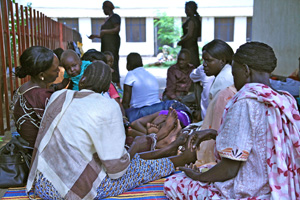AMREF renews efforts to reduce maternal mortality in S. Sudan
October 5, 2014 (JUBA) – The high rate of maternal mortality in South Sudan would significantly reduce if every citizen contributed a dollar to support the ‘Stand Up for Mothers’ campaign, an Amref Health Africa official said.

“African women are at the centre of the social and economic development chain. The death of a mother while giving birth is a big setback for African society. Through training of more midwives, Amref helps deliver immediate and sustainable solution,” she said.
“A healthy Africa needs healthy mothers, and African mothers need African midwives.”
Guerma, who was in Juba last week, also held meetings with various government and United Nations agency officials.
She also held discussions with Lul Riek, the director of International Health at the health ministry, where she reiterated Amref’s commitment to continue training midwives at Maridi Health Sciences Institute.
The Amref director general also lauded the support being extended by the UN Population Fund (UNFPA) towards training midwives in the country.
With 2,054 deaths out of every 100,000 live births, South Sudan currently has the highest maternal mortality rate in the world, according to statistic from UNFPA.
An estimated 15,000 midwives are expected to benefit from this new campaign, with 4,900 of them earmarked to come from South Sudan.
George Bhoka, the country director of Amref South Sudan said with support from government and development partners, Amref South Sudan is increasing access to maternal and child health services and control of communicable diseases as well as strengthening the health system.
One trained midwife, Amref says, can provide care for at least 500 women every year.
(ST)
.
